
CoLLM
The implementation for the work "CoLLM: Integrating Collaborative Embeddings into Large Language Models for Recommendation".
Stars: 51
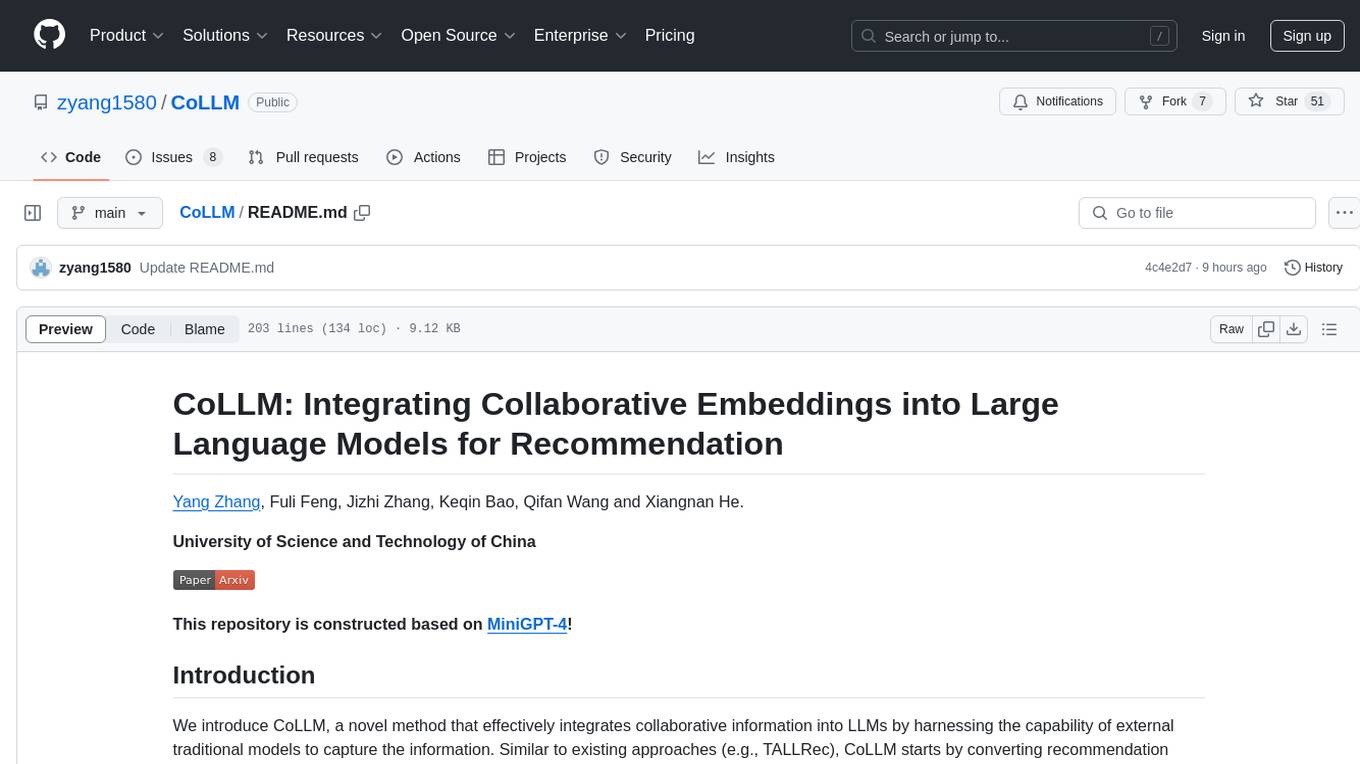
CoLLM is a novel method that integrates collaborative information into Large Language Models (LLMs) for recommendation. It converts recommendation data into language prompts, encodes them with both textual and collaborative information, and uses a two-step tuning method to train the model. The method incorporates user/item ID fields in prompts and employs a conventional collaborative model to generate user/item representations. CoLLM is built upon MiniGPT-4 and utilizes pretrained Vicuna weights for training.
README:
Yang Zhang, Fuli Feng, Jizhi Zhang, Keqin Bao, Qifan Wang and Xiangnan He.
University of Science and Technology of China
This repository is constructed based on MiniGPT-4!
We introduce CoLLM, a novel method that effectively integrates collaborative information into LLMs by harnessing the capability of external traditional models to capture the information. Similar to existing approaches (e.g., TALLRec), CoLLM starts by converting recommendation data into language prompts (prompt construction), which are then encoded and inputted into an LLM to generate recommendations (hybrid encoding and LLM prediction). We have specific designs for incorporating collaborative information:
-
When constructing prompts, we add user/item ID fields in addition to text descriptions to represent collaborative information.
-
When encoding prompts, alongside the LLMs’ tokenization and embedding for encoding textual information, we employ a conventional collaborative model to generate user/item representations that capture collaborative information, and map them into the token embedding space of the LLM, which are achieved by the CIE module in the figure.
For training, we take a two-step tuning method:
-
Tuning the LoRA Module with the text-only input.
-
Tuning the CIE module with both the text and user/item ID data.
1. Prepare the code and the environment
Git clone our repository, creating a python environment and ativate it via the following command
git clone https://github.com/zyang1580/CoLLM.git
cd CoLLM
conda env create -f environment.yml
conda activate minigpt4Code Structure:
├──minigpt4: Core code of CoLLM, following the structure of MiniGPT-4.
├── models: Defines our CoLLM model architecture.
├── datasets: Defines dataset classes.
├── task: A overall task class, defining the used model and datasets, training epoch and evaluation.
├── runners: A runner class to train and evaluate a model based on a task.
├── common: Commonly used functions.
├──dataset: Dataset pre-processing.
├──prompt: Used prompts.
├──train_configs: Training configuration files, setting hyperparameters.
├──train_collm_xx.py CoLLM training file.
├──baseline_train_xx.py: Baseline training file.
Note: For the meaning of the parameters involved in train_configs, please read the comments of collm_pretrain_mf_ood.yaml. The parameters in other train_config files have the same meaning.
2. Prepare the pretrained Vicuna weights
The current version of CoLLM is built on the v0 versoin of Vicuna-7B. Please refer to Mini-GPT4's instruction here to prepare the Vicuna weights. The final weights would be in a single folder in a structure similar to the following:
vicuna_weights
├── config.json
├── generation_config.json
├── pytorch_model.bin.index.json
├── pytorch_model-00001-of-00003.bin
...
Then, set the path to the vicuna weight in the "llama_model" field of a traing config file, e.g., here for CoLLM-MF.
3. Prepare the Datasets
You can process the data yourself using the code provided in the ./dataset directory. Alternatively, you can download our pre-processed data from here.
The training of CoLLM contains two stages:
1. LoRA Tuning
To endow the cold-start recommendation capabilities of LLM, our initial focus is on fine-tuning the LoRA module to learn recommendation tasks independently of collaborative information. That is, we solely utilize the text-only segment of the prompt (e.g., "prompt_/tallrec_movie.txt") to generate predictions and minimize prediction errors for tuning the LoRA module to learning recommendation.
When implementing, you need to set the hyper-parameters in the training config file (e.g., train_configs/collm_pretrain_mf_ood.yaml) as follows:
- freeze_rec: True # freeze the collaborative rec model
- freeze_proj: True # freeze the mapping function or not
- freeze_lora: False # tuning the LoRA module
- prompt_path: "prompt_/tallrec_movie.txt" # use the prompt without the user/item IDs
- ckpt: None # without pretrained LoRA and CIE (LoRA), you can aslo directly delete this hypee-parameter
- evaluate:False #set training
To launch the first stage training, run the following command. In our experiments, we use 2 A100.
CUDA_VISIBLE_DEVICES=6,7 WORLD_SIZE=2 nohup torchrun --nproc-per-node 2 --master_port=11139 train_collm_mf_din.py --cfg-path=train_configs/collm_pretrain_mf_ood.yaml > /log.out &Our CoLLM checkpoint for this stage training can be downloaded at here (7B). Note that, the model obtained in this stage can be thought as a version of TALLRec.
2. CIE Tuning
In this step, we tune the CIE module while keeping all other components frozen The objective of this tuning step is to enable the CIE module to learn how to extract and map collaborative information effectively for LLM usage in recommendations. To achieve this, we utilize prompts containing user/item IDs to generate predictions and tune the CIE model to minimize prediction errors. When implementing, you need set the hyper-parameters in the training config file as follows:
- freeze_rec: True # freeze the collaborative rec model
- freeze_proj: False # tuning the mapping function or not
- freeze_lora: True # freeze the LoRA module
- pretrained_path: pretrained_collab_model_path # pretrained collab. model path
- evaluate:False #set training
- prompt_path: "prompt_/collm_movie.txt" # use the prompt with the user/item IDs
- ckpt: step1_checkpoint_path # with pretrained LoRA
Then run the same command to the stage 1. Our final CoLLM checkpoint can be downloaded at here (7B).
** Notes: By default, at this stage, we utilize a pretrained collaborative model and focus solely on tuning the mapping module (an MLP). Alternatively, you have the option to fine-tune both the complete CIE module (mapping + collaborative model), with or without prior pretraining of the collaborative model. This approach might yield enhanced performance, as outlined in Section 5.3.2 of our paper. This can be achieved by controlling the above two hyper-parameters: freeze_rec and pretrained_path.
Set the hyper-parameters in the training config file as follows:
- ckpt: your_checkpoint_path # trained model path
- evaluate: True # only evaluate
Then run the same command to the first stage training.
- MiniGPT4 Our repository is built upon MiniGPT-4!
- Vicuna The fantastic language ability of Vicuna with only 13B parameters is just amazing. And it is open-source!
If you're using CoLLM code in your research or applications, please cite our paper using this BibTeX:
@article{zhang2023collm,
title={CoLLM: Integrating Collaborative Embeddings into Large Language Models for Recommendation},
author={Zhang, Yang and Feng, Fuli and Zhang, Jizhi and Bao, Keqin and Wang, Qifan and He, Xiangnan},
journal={arXiv preprint arXiv:2310.19488},
year={2023}
}This repository is under BSD 3-Clause License. Many codes are based on MiniGPT-4 with BSD 3-Clause License here, which is build upon Lavis with BSD 3-Clause License here.
For Tasks:
Click tags to check more tools for each tasksFor Jobs:
Alternative AI tools for CoLLM
Similar Open Source Tools

CoLLM
CoLLM is a novel method that integrates collaborative information into Large Language Models (LLMs) for recommendation. It converts recommendation data into language prompts, encodes them with both textual and collaborative information, and uses a two-step tuning method to train the model. The method incorporates user/item ID fields in prompts and employs a conventional collaborative model to generate user/item representations. CoLLM is built upon MiniGPT-4 and utilizes pretrained Vicuna weights for training.
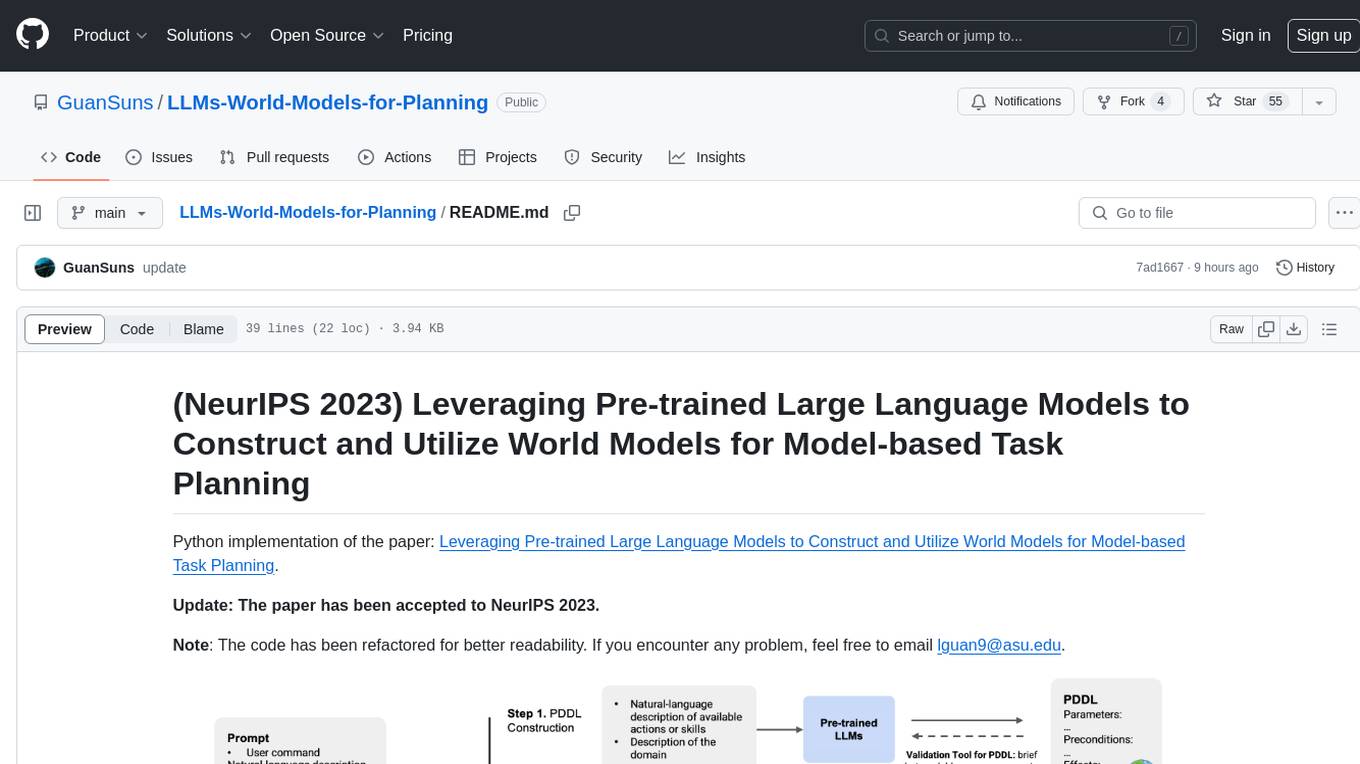
LLMs-World-Models-for-Planning
This repository provides a Python implementation of a method that leverages pre-trained large language models to construct and utilize world models for model-based task planning. It includes scripts to generate domain models using natural language descriptions, correct domain models based on feedback, and support plan generation for tasks in different domains. The code has been refactored for better readability and includes tools for validating PDDL syntax and handling corrective feedback.
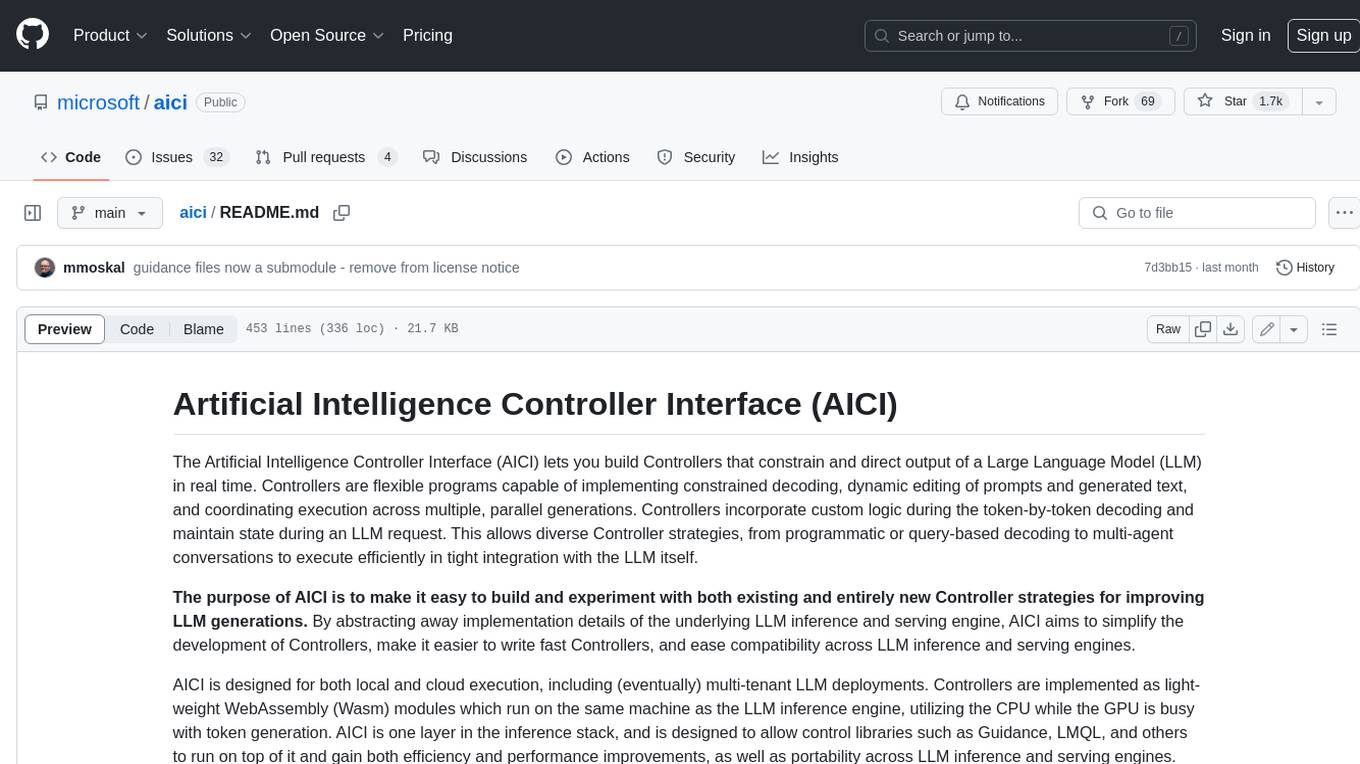
aici
The Artificial Intelligence Controller Interface (AICI) lets you build Controllers that constrain and direct output of a Large Language Model (LLM) in real time. Controllers are flexible programs capable of implementing constrained decoding, dynamic editing of prompts and generated text, and coordinating execution across multiple, parallel generations. Controllers incorporate custom logic during the token-by-token decoding and maintain state during an LLM request. This allows diverse Controller strategies, from programmatic or query-based decoding to multi-agent conversations to execute efficiently in tight integration with the LLM itself.
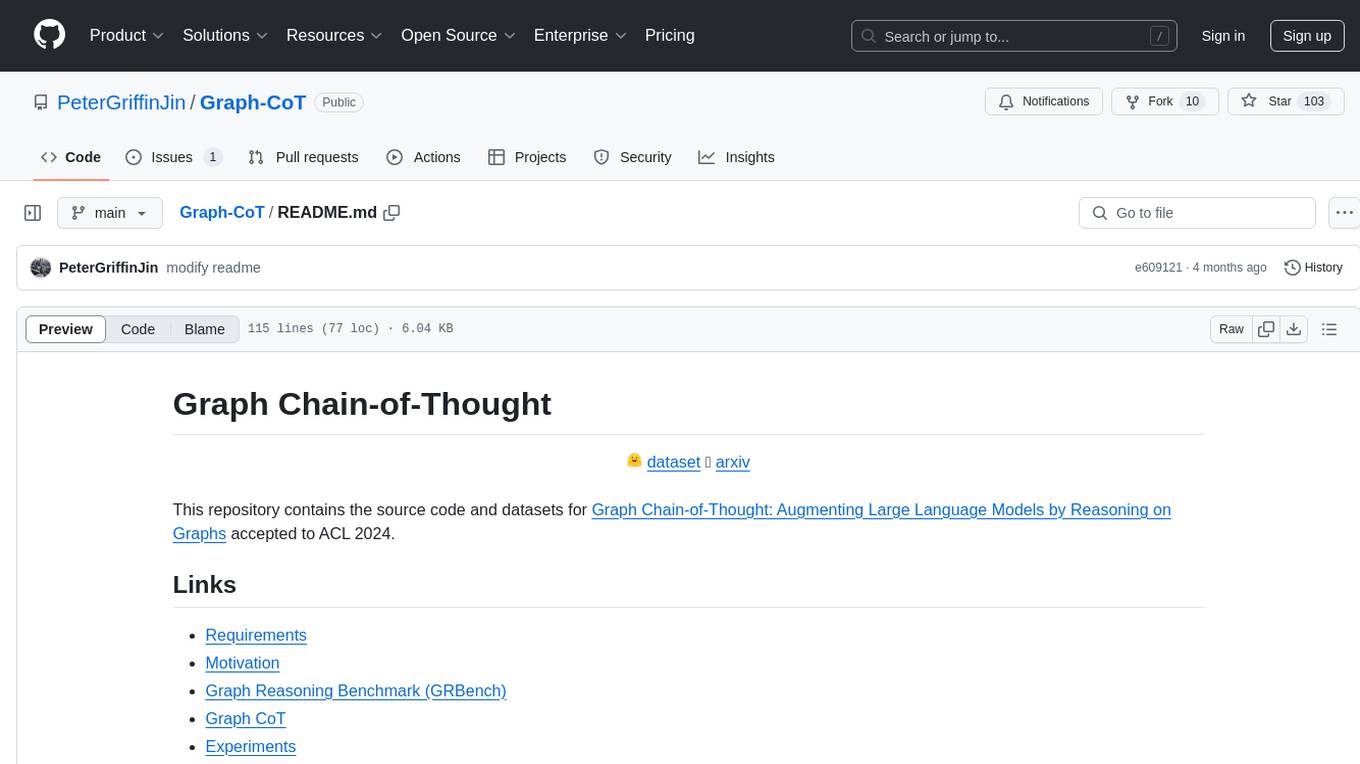
Graph-CoT
This repository contains the source code and datasets for Graph Chain-of-Thought: Augmenting Large Language Models by Reasoning on Graphs accepted to ACL 2024. It proposes a framework called Graph Chain-of-thought (Graph-CoT) to enable Language Models to traverse graphs step-by-step for reasoning, interaction, and execution. The motivation is to alleviate hallucination issues in Language Models by augmenting them with structured knowledge sources represented as graphs.
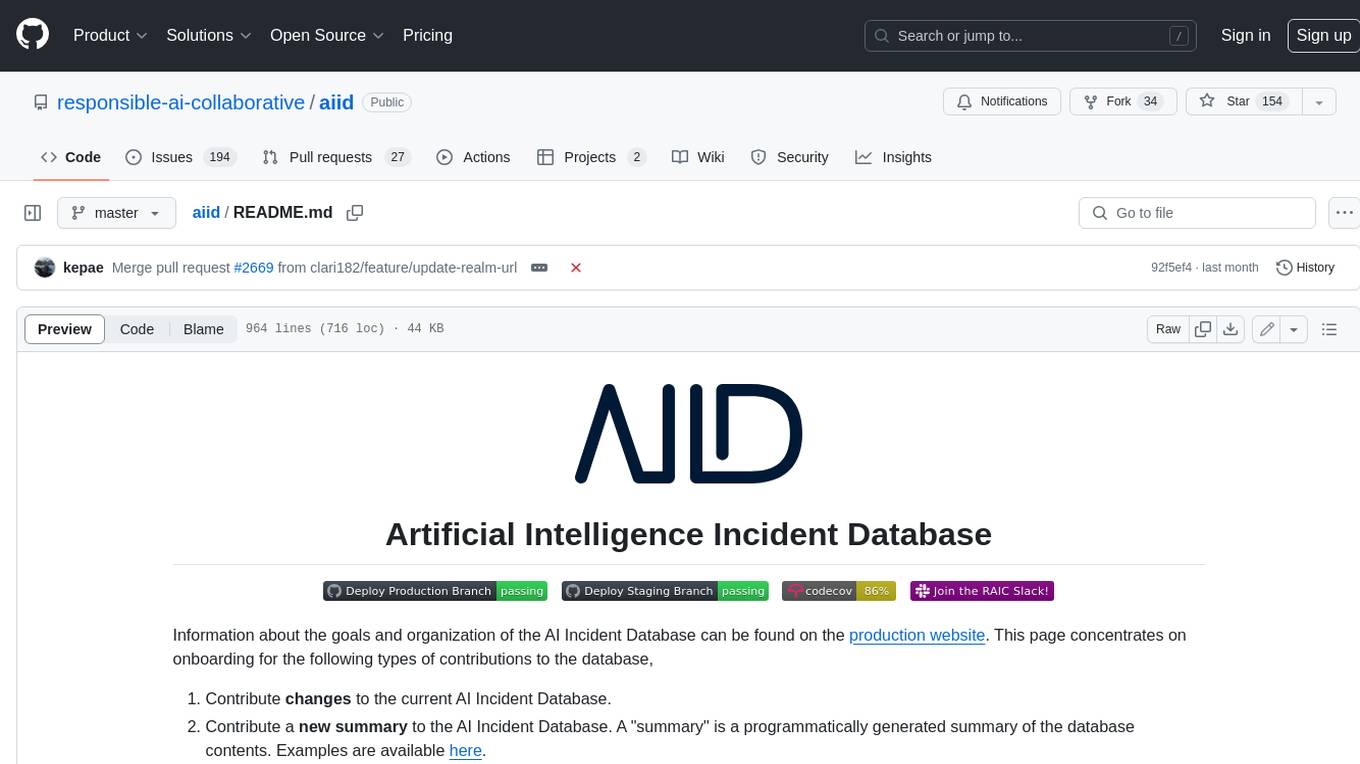
aiid
The Artificial Intelligence Incident Database (AIID) is a collection of incidents involving the development and use of artificial intelligence (AI). The database is designed to help researchers, policymakers, and the public understand the potential risks and benefits of AI, and to inform the development of policies and practices to mitigate the risks and promote the benefits of AI. The AIID is a collaborative project involving researchers from the University of California, Berkeley, the University of Washington, and the University of Toronto.
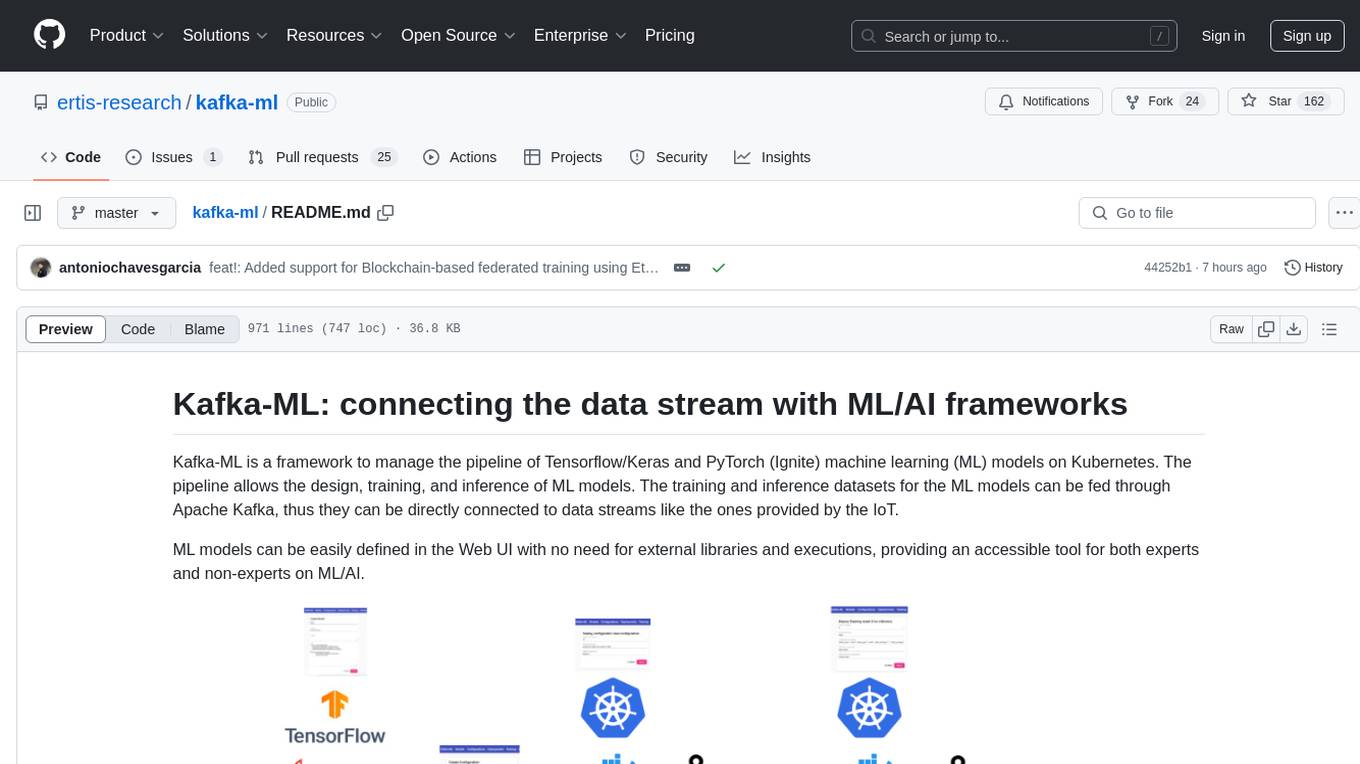
kafka-ml
Kafka-ML is a framework designed to manage the pipeline of Tensorflow/Keras and PyTorch machine learning models on Kubernetes. It enables the design, training, and inference of ML models with datasets fed through Apache Kafka, connecting them directly to data streams like those from IoT devices. The Web UI allows easy definition of ML models without external libraries, catering to both experts and non-experts in ML/AI.
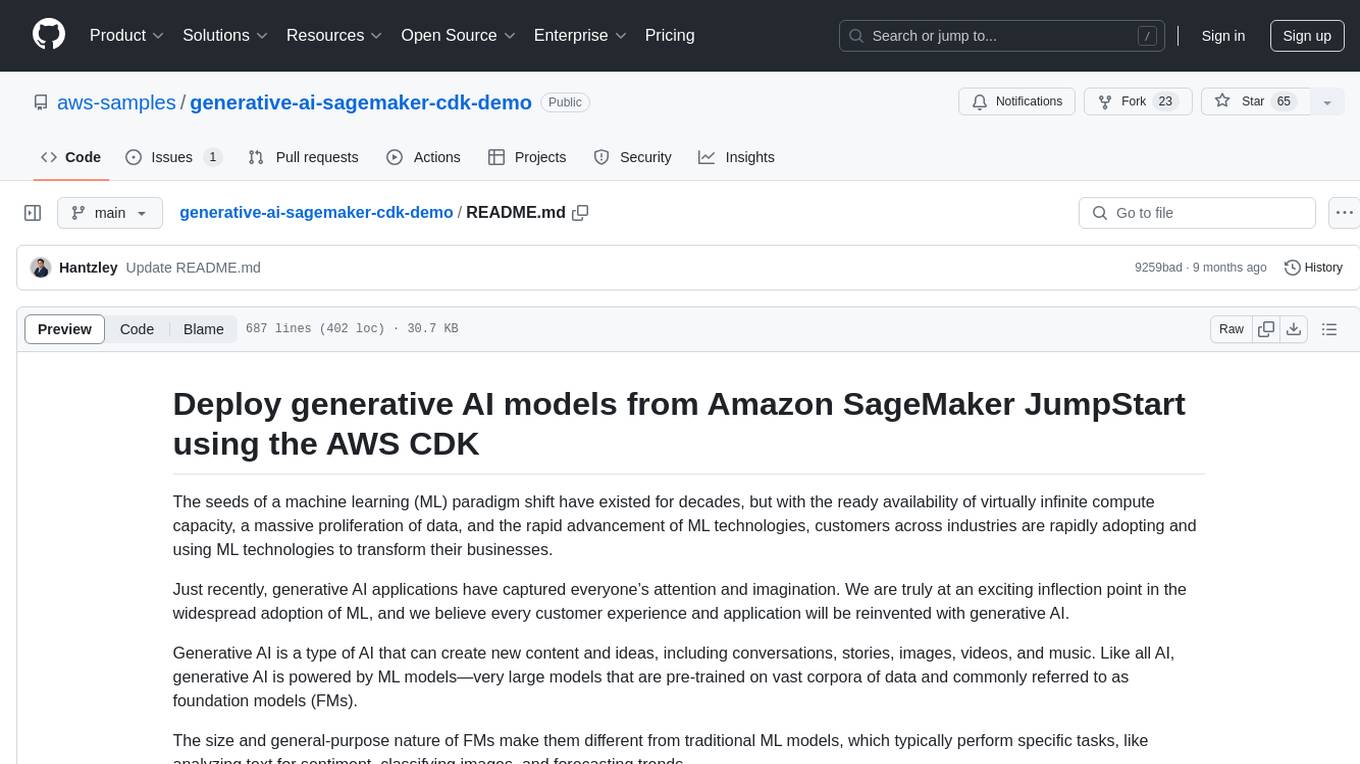
generative-ai-sagemaker-cdk-demo
This repository showcases how to deploy generative AI models from Amazon SageMaker JumpStart using the AWS CDK. Generative AI is a type of AI that can create new content and ideas, such as conversations, stories, images, videos, and music. The repository provides a detailed guide on deploying image and text generative AI models, utilizing pre-trained models from SageMaker JumpStart. The web application is built on Streamlit and hosted on Amazon ECS with Fargate. It interacts with the SageMaker model endpoints through Lambda functions and Amazon API Gateway. The repository also includes instructions on setting up the AWS CDK application, deploying the stacks, using the models, and viewing the deployed resources on the AWS Management Console.
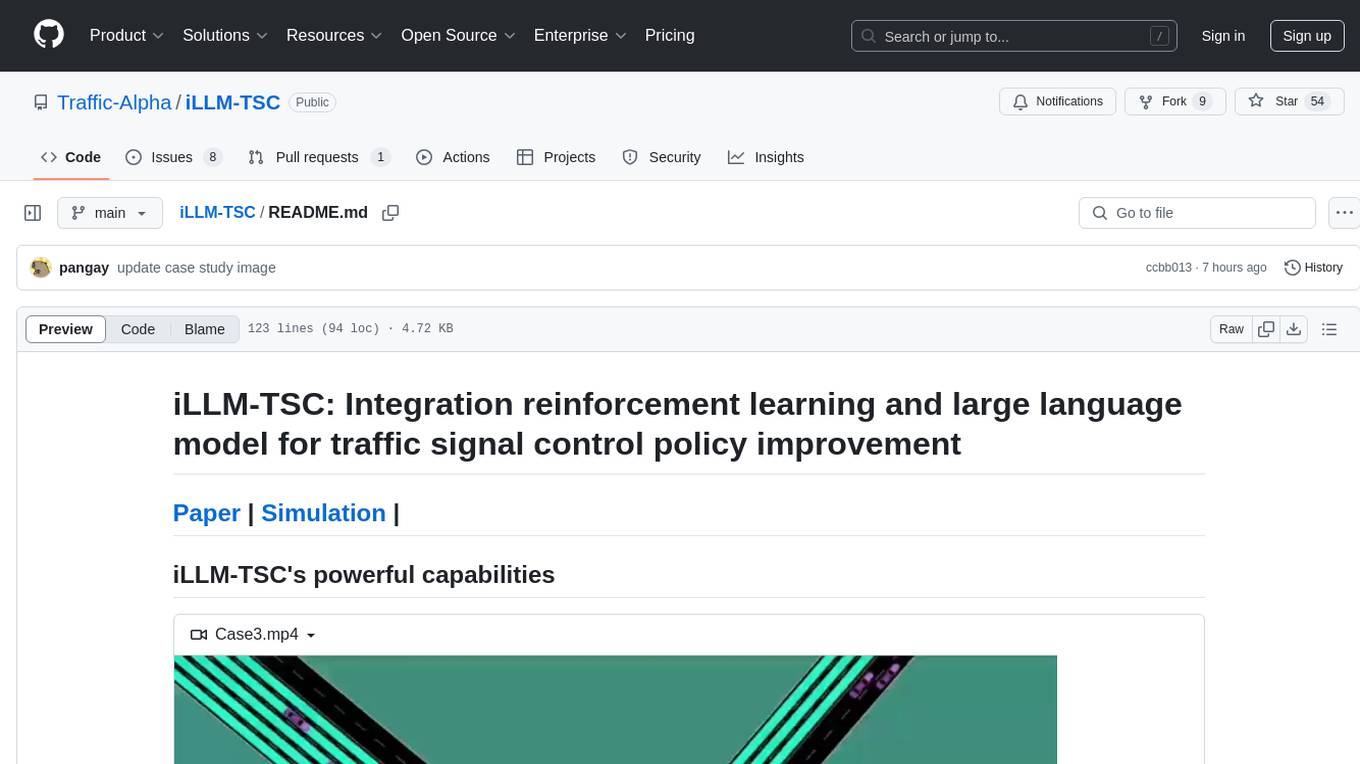
iLLM-TSC
iLLM-TSC is a framework that integrates reinforcement learning and large language models for traffic signal control policy improvement. It refines RL decisions based on real-world contexts and provides reasonable actions when RL agents make erroneous decisions. The framework includes cases where the large language model provides explanations and recommendations for RL agent actions, such as prioritizing emergency vehicles at intersections. Users can install and run the framework locally to train RL models and evaluate the combined RL+LLM approach.
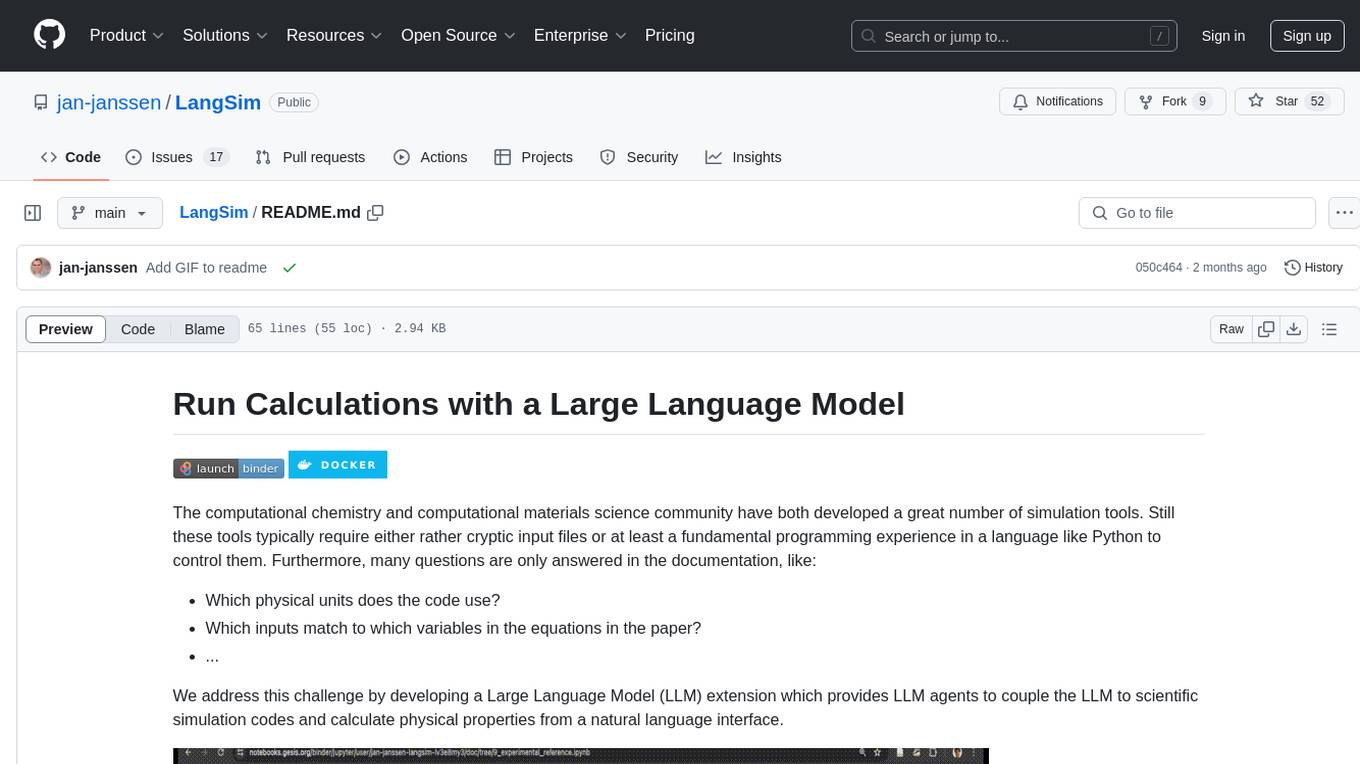
LangSim
LangSim is a tool developed to address the challenge of using simulation tools in computational chemistry and materials science, which typically require cryptic input files or programming experience. The tool provides a Large Language Model (LLM) extension with agents to couple the LLM to scientific simulation codes and calculate physical properties from a natural language interface. It aims to simplify the process of interacting with simulation tools by enabling users to query the large language model directly from a Python environment or a web-based interface.
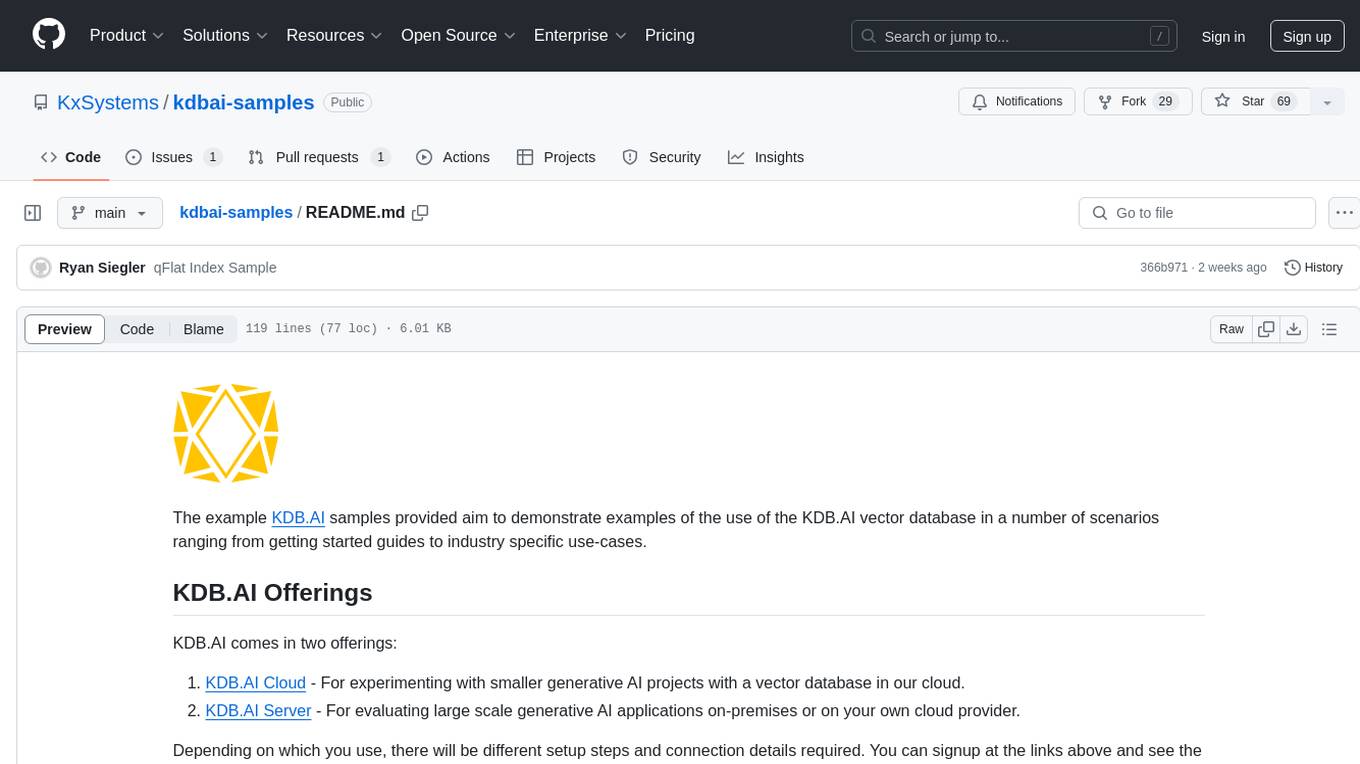
kdbai-samples
KDB.AI is a time-based vector database that allows developers to build scalable, reliable, and real-time applications by providing advanced search, recommendation, and personalization for Generative AI applications. It supports multiple index types, distance metrics, top-N and metadata filtered retrieval, as well as Python and REST interfaces. The repository contains samples demonstrating various use-cases such as temporal similarity search, document search, image search, recommendation systems, sentiment analysis, and more. KDB.AI integrates with platforms like ChatGPT, Langchain, and LlamaIndex. The setup steps require Unix terminal, Python 3.8+, and pip installed. Users can install necessary Python packages and run Jupyter notebooks to interact with the samples.

llmops-promptflow-template
LLMOps with Prompt flow is a template and guidance for building LLM-infused apps using Prompt flow. It provides centralized code hosting, lifecycle management, variant and hyperparameter experimentation, A/B deployment, many-to-many dataset/flow relationships, multiple deployment targets, comprehensive reporting, BYOF capabilities, configuration-based development, local prompt experimentation and evaluation, endpoint testing, and optional Human-in-loop validation. The tool is customizable to suit various application needs.
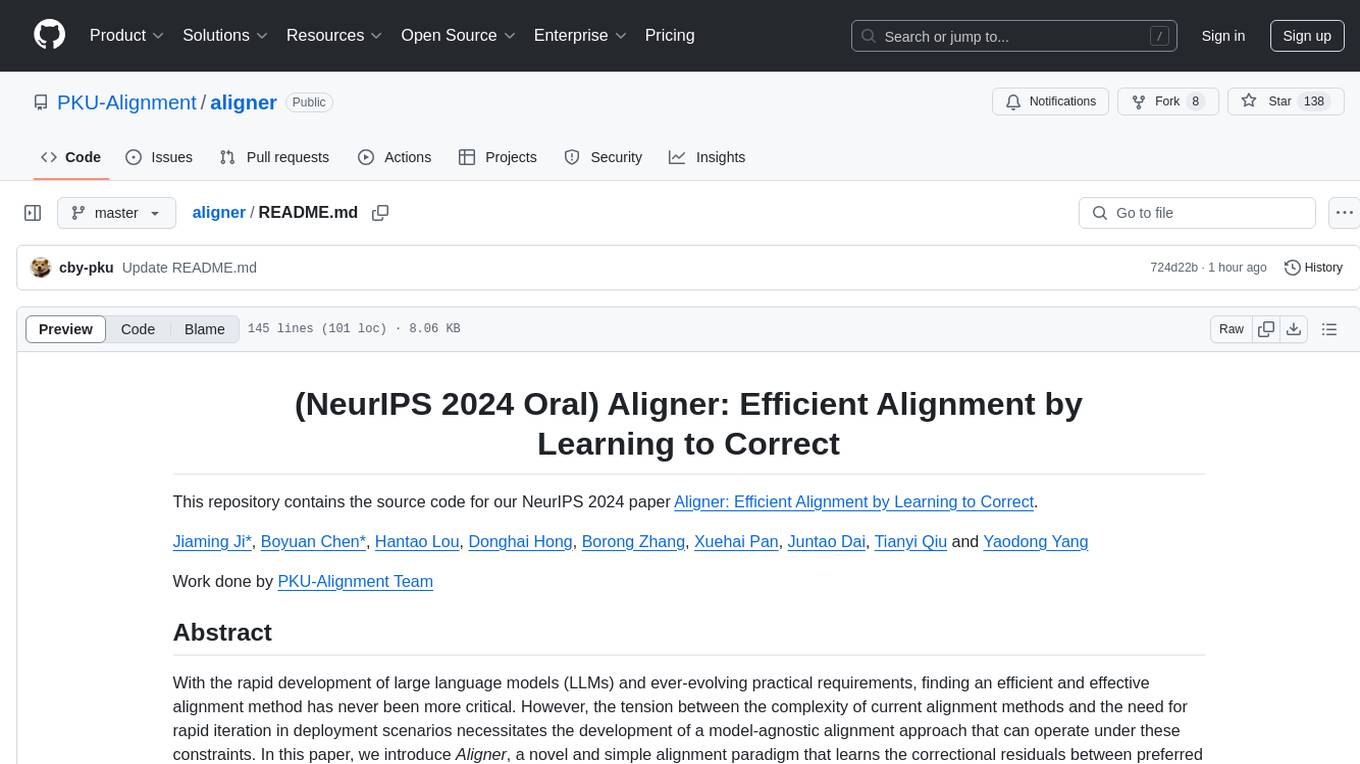
aligner
Aligner is a model-agnostic alignment tool designed to efficiently correct responses from large language models. It redistributes initial answers to align with human intentions, improving performance across various LLMs. The tool can be applied with minimal training, enhancing upstream models and reducing hallucination. Aligner's 'copy and correct' method preserves the base structure while enhancing responses. It achieves significant performance improvements in helpfulness, harmlessness, and honesty dimensions, with notable success in boosting Win Rates on evaluation leaderboards.
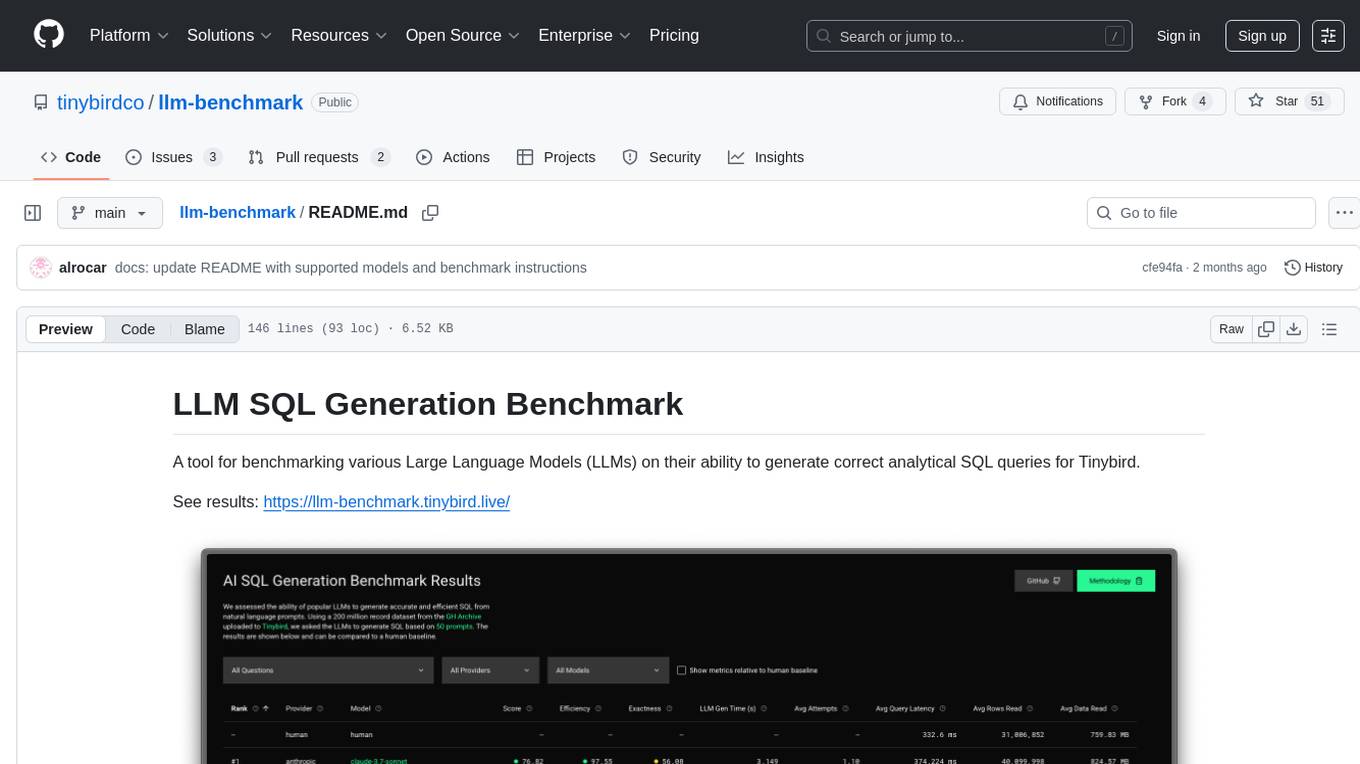
llm-benchmark
LLM SQL Generation Benchmark is a tool for evaluating different Large Language Models (LLMs) on their ability to generate accurate analytical SQL queries for Tinybird. It measures SQL query correctness, execution success, performance metrics, error handling, and recovery. The benchmark includes an automated retry mechanism for error correction. It supports various providers and models through OpenRouter and can be extended to other models. The benchmark is based on a GitHub dataset with 200M rows, where each LLM must produce SQL from 50 natural language prompts. Results are stored in JSON files and presented in a web application. Users can benchmark new models by following provided instructions.
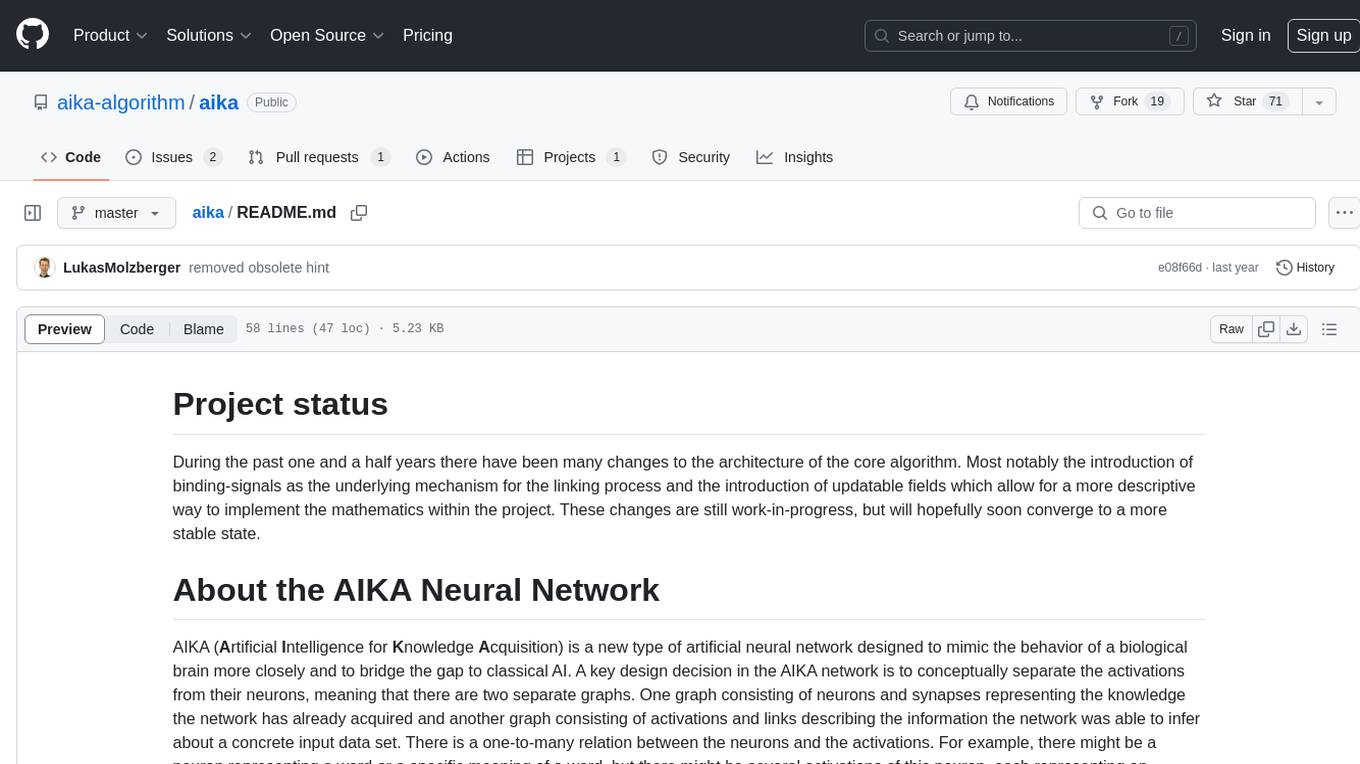
aika
AIKA (Artificial Intelligence for Knowledge Acquisition) is a new type of artificial neural network designed to mimic the behavior of a biological brain more closely and bridge the gap to classical AI. The network conceptually separates activations from neurons, creating two separate graphs to represent acquired knowledge and inferred information. It uses different types of neurons and synapses to propagate activation values, binding signals, causal relations, and training gradients. The network structure allows for flexible topology and supports the gradual population of neurons and synapses during training.
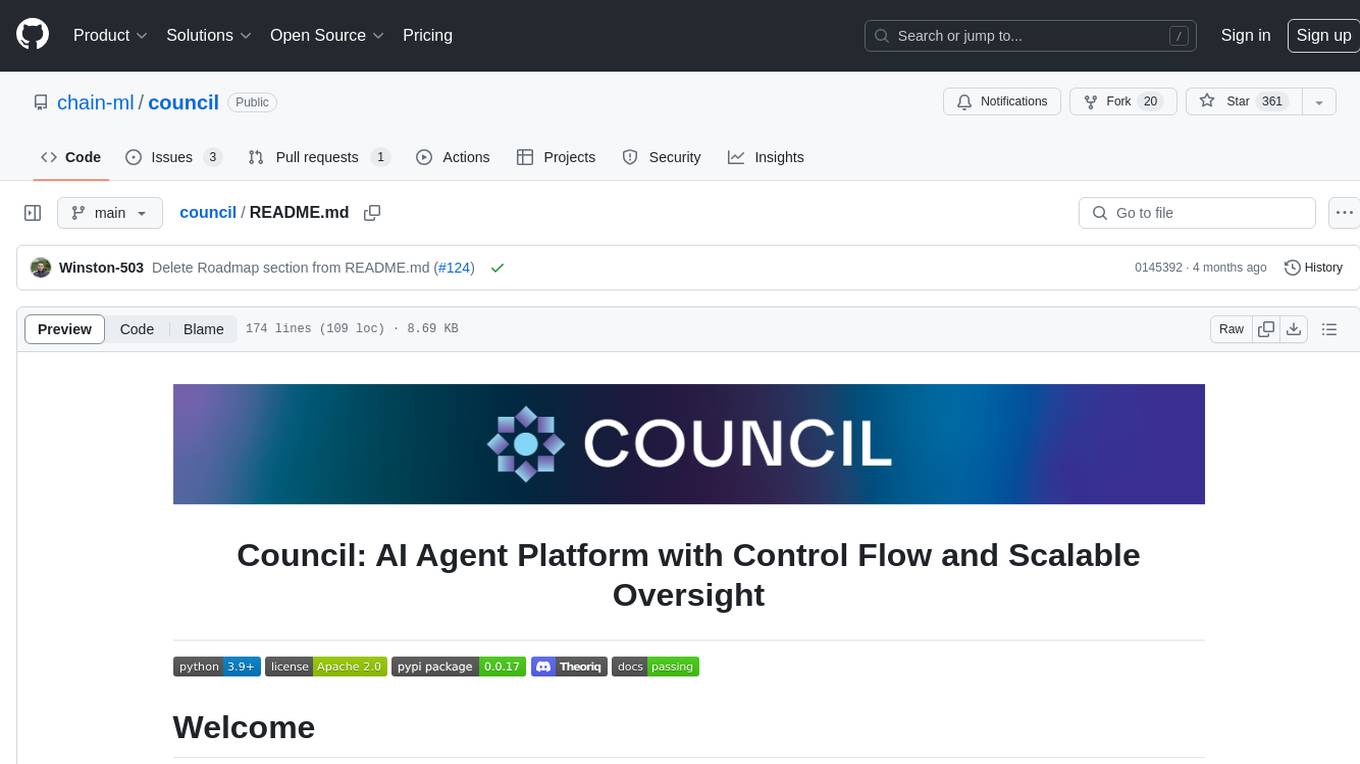
council
Council is an open-source platform designed for the rapid development and deployment of customized generative AI applications using teams of agents. It extends the LLM tool ecosystem by providing advanced control flow and scalable oversight for AI agents. Users can create sophisticated agents with predictable behavior by leveraging Council's powerful approach to control flow using Controllers, Filters, Evaluators, and Budgets. The framework allows for automated routing between agents, comparing, evaluating, and selecting the best results for a task. Council aims to facilitate packaging and deploying agents at scale on multiple platforms while enabling enterprise-grade monitoring and quality control.
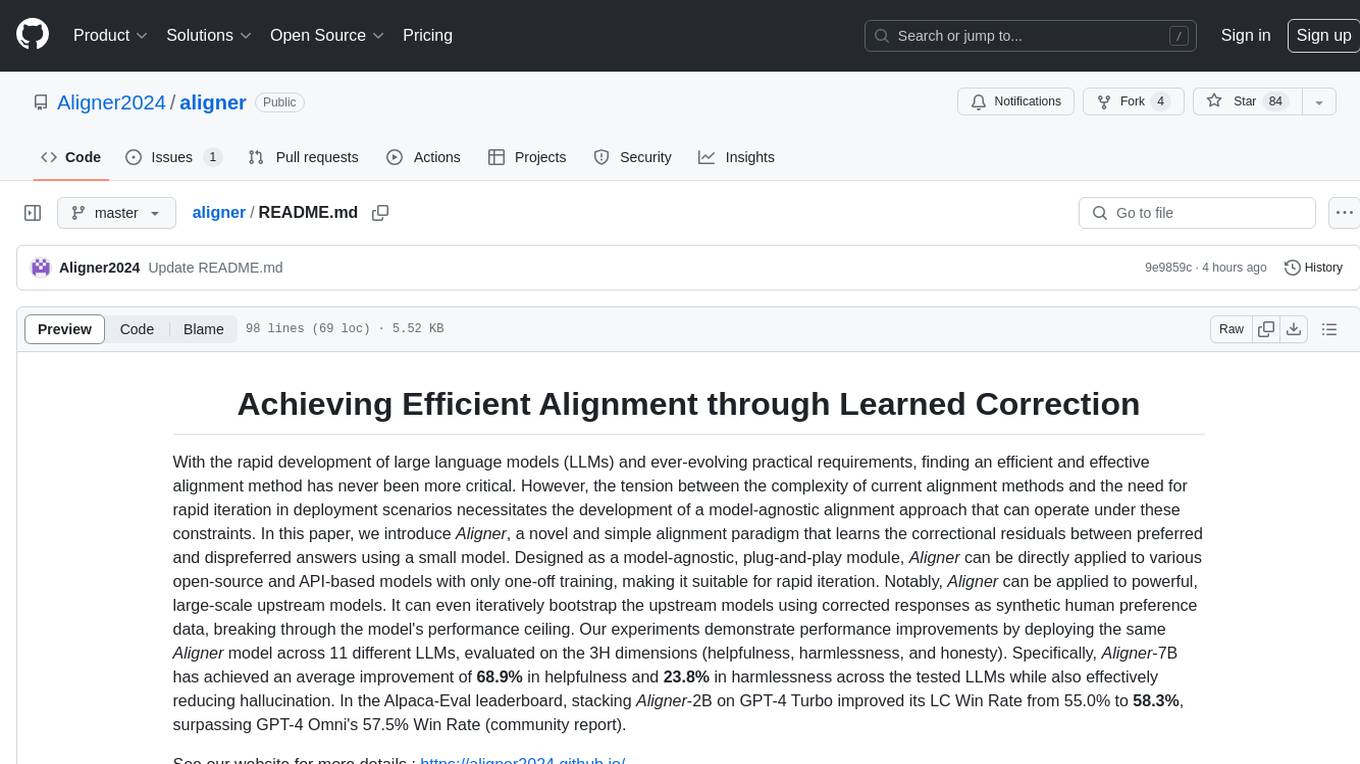
aligner
Aligner is a model-agnostic alignment tool that learns correctional residuals between preferred and dispreferred answers using a small model. It can be directly applied to various open-source and API-based models with only one-off training, suitable for rapid iteration and improving model performance. Aligner has shown significant improvements in helpfulness, harmlessness, and honesty dimensions across different large language models.
For similar tasks
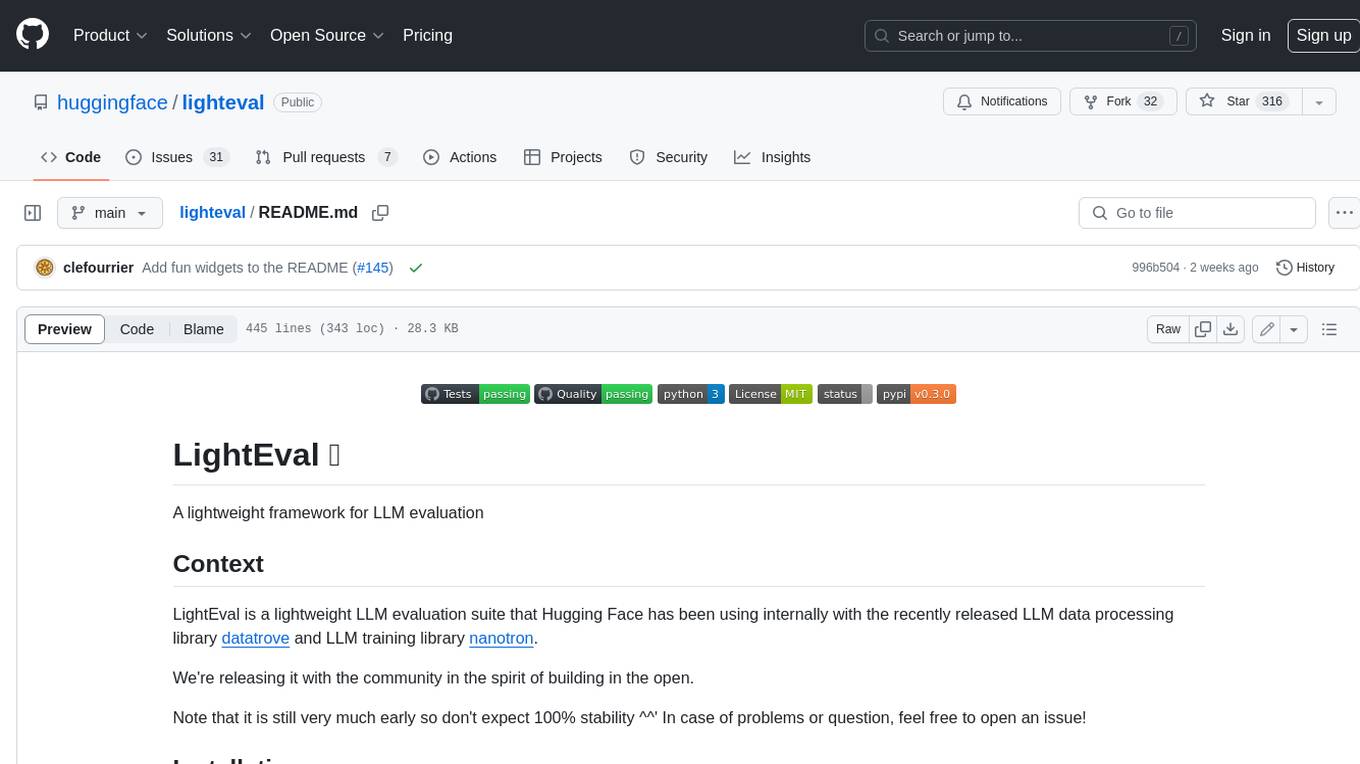
lighteval
LightEval is a lightweight LLM evaluation suite that Hugging Face has been using internally with the recently released LLM data processing library datatrove and LLM training library nanotron. We're releasing it with the community in the spirit of building in the open. Note that it is still very much early so don't expect 100% stability ^^' In case of problems or question, feel free to open an issue!
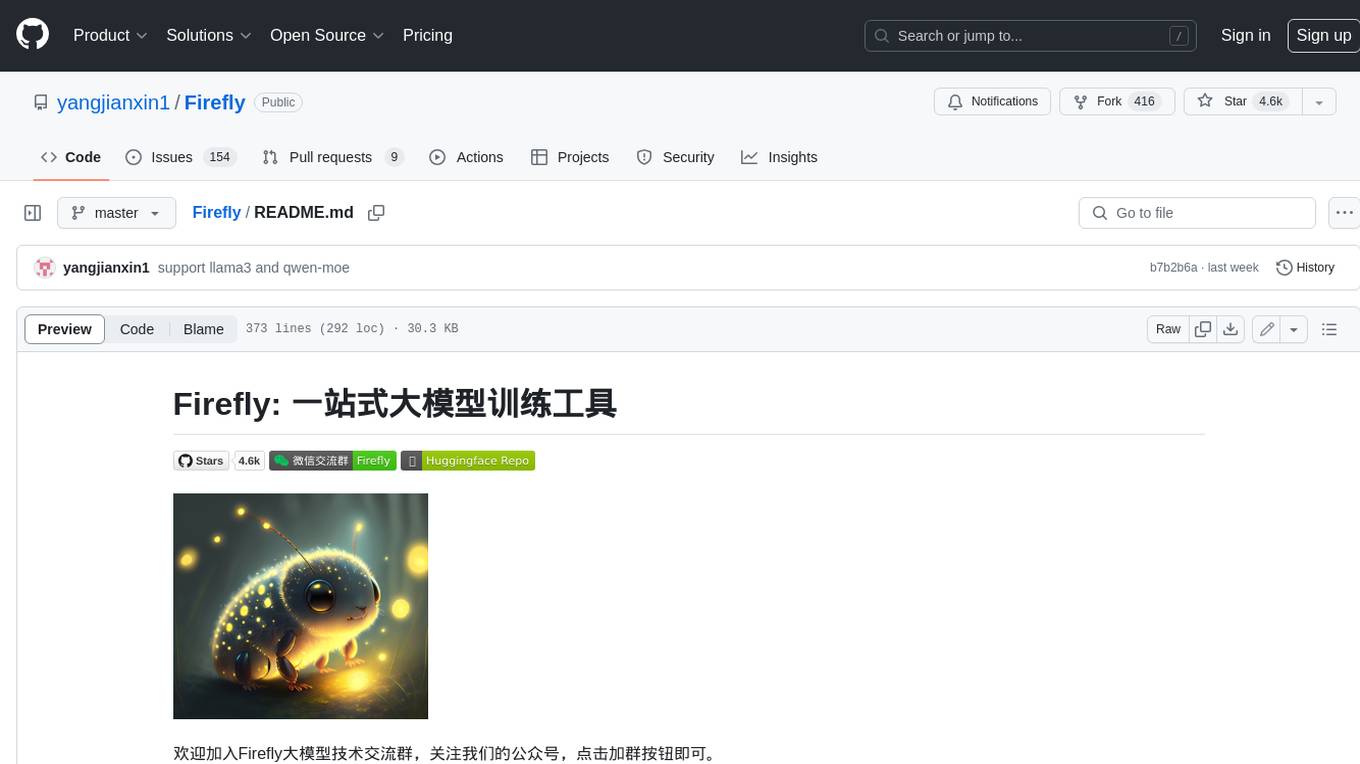
Firefly
Firefly is an open-source large model training project that supports pre-training, fine-tuning, and DPO of mainstream large models. It includes models like Llama3, Gemma, Qwen1.5, MiniCPM, Llama, InternLM, Baichuan, ChatGLM, Yi, Deepseek, Qwen, Orion, Ziya, Xverse, Mistral, Mixtral-8x7B, Zephyr, Vicuna, Bloom, etc. The project supports full-parameter training, LoRA, QLoRA efficient training, and various tasks such as pre-training, SFT, and DPO. Suitable for users with limited training resources, QLoRA is recommended for fine-tuning instructions. The project has achieved good results on the Open LLM Leaderboard with QLoRA training process validation. The latest version has significant updates and adaptations for different chat model templates.
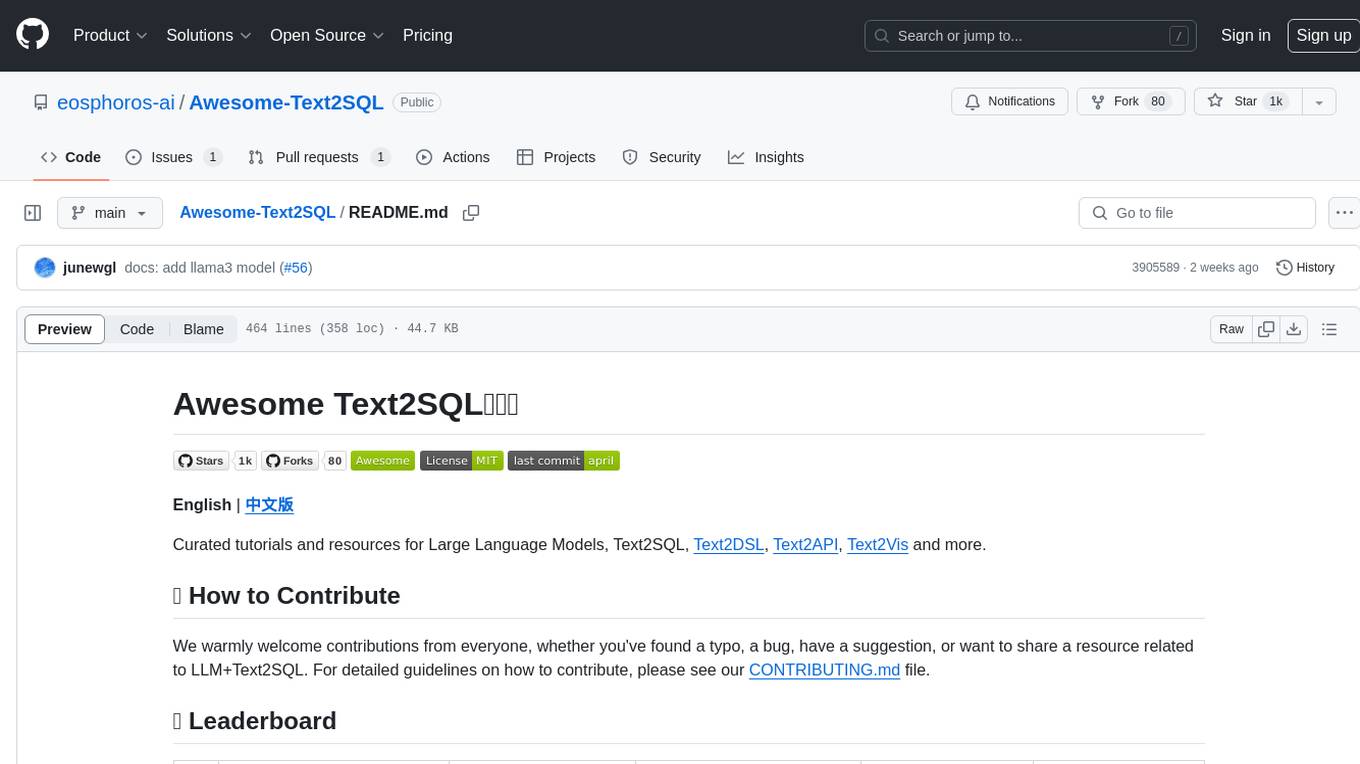
Awesome-Text2SQL
Awesome Text2SQL is a curated repository containing tutorials and resources for Large Language Models, Text2SQL, Text2DSL, Text2API, Text2Vis, and more. It provides guidelines on converting natural language questions into structured SQL queries, with a focus on NL2SQL. The repository includes information on various models, datasets, evaluation metrics, fine-tuning methods, libraries, and practice projects related to Text2SQL. It serves as a comprehensive resource for individuals interested in working with Text2SQL and related technologies.
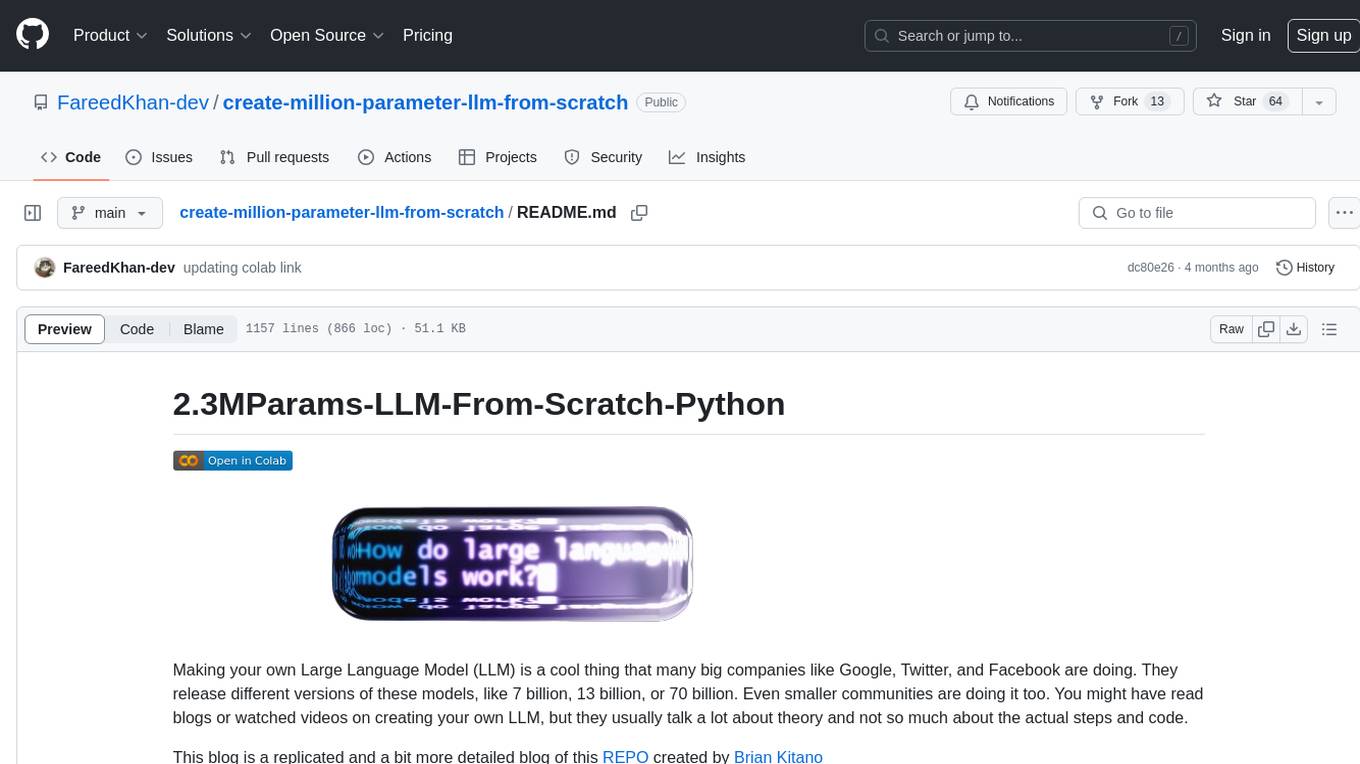
create-million-parameter-llm-from-scratch
The 'create-million-parameter-llm-from-scratch' repository provides a detailed guide on creating a Large Language Model (LLM) with 2.3 million parameters from scratch. The blog replicates the LLaMA approach, incorporating concepts like RMSNorm for pre-normalization, SwiGLU activation function, and Rotary Embeddings. The model is trained on a basic dataset to demonstrate the ease of creating a million-parameter LLM without the need for a high-end GPU.
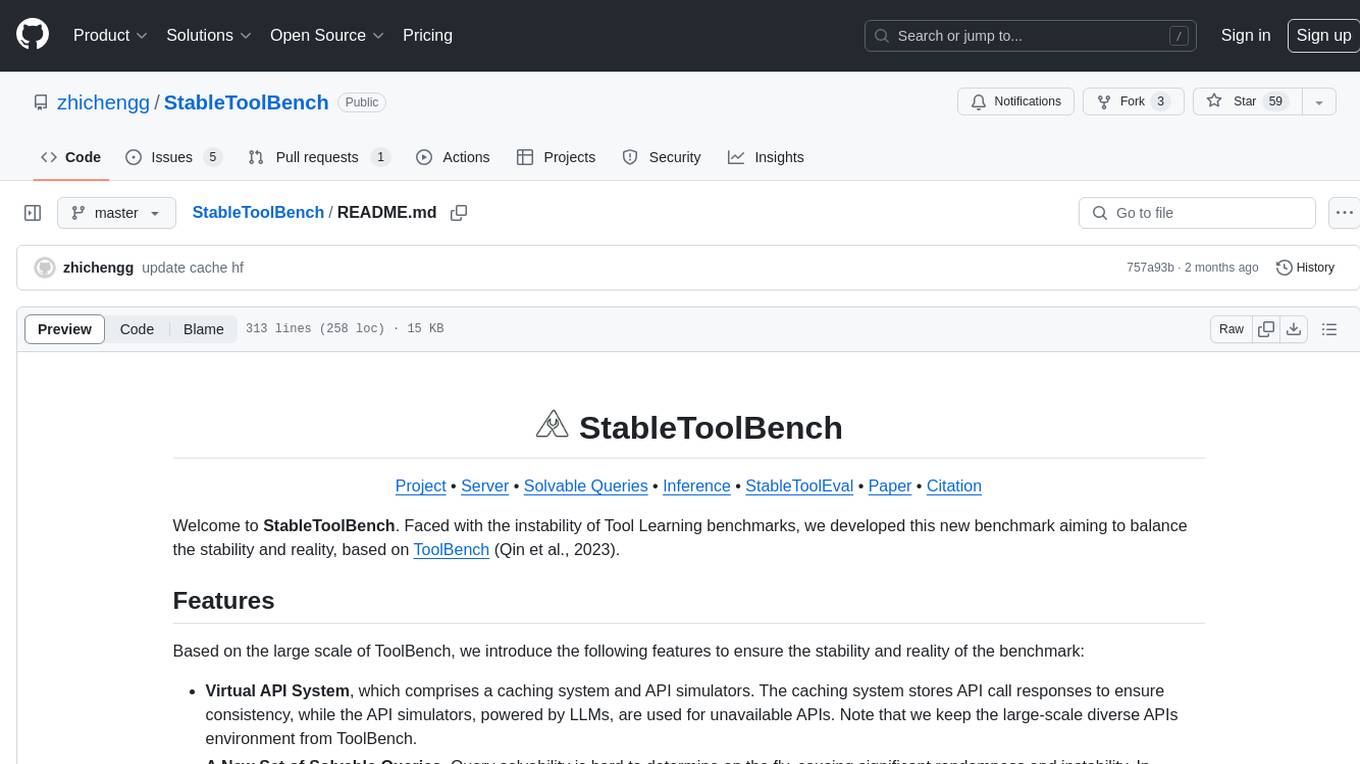
StableToolBench
StableToolBench is a new benchmark developed to address the instability of Tool Learning benchmarks. It aims to balance stability and reality by introducing features such as a Virtual API System with caching and API simulators, a new set of solvable queries determined by LLMs, and a Stable Evaluation System using GPT-4. The Virtual API Server can be set up either by building from source or using a prebuilt Docker image. Users can test the server using provided scripts and evaluate models with Solvable Pass Rate and Solvable Win Rate metrics. The tool also includes model experiments results comparing different models' performance.
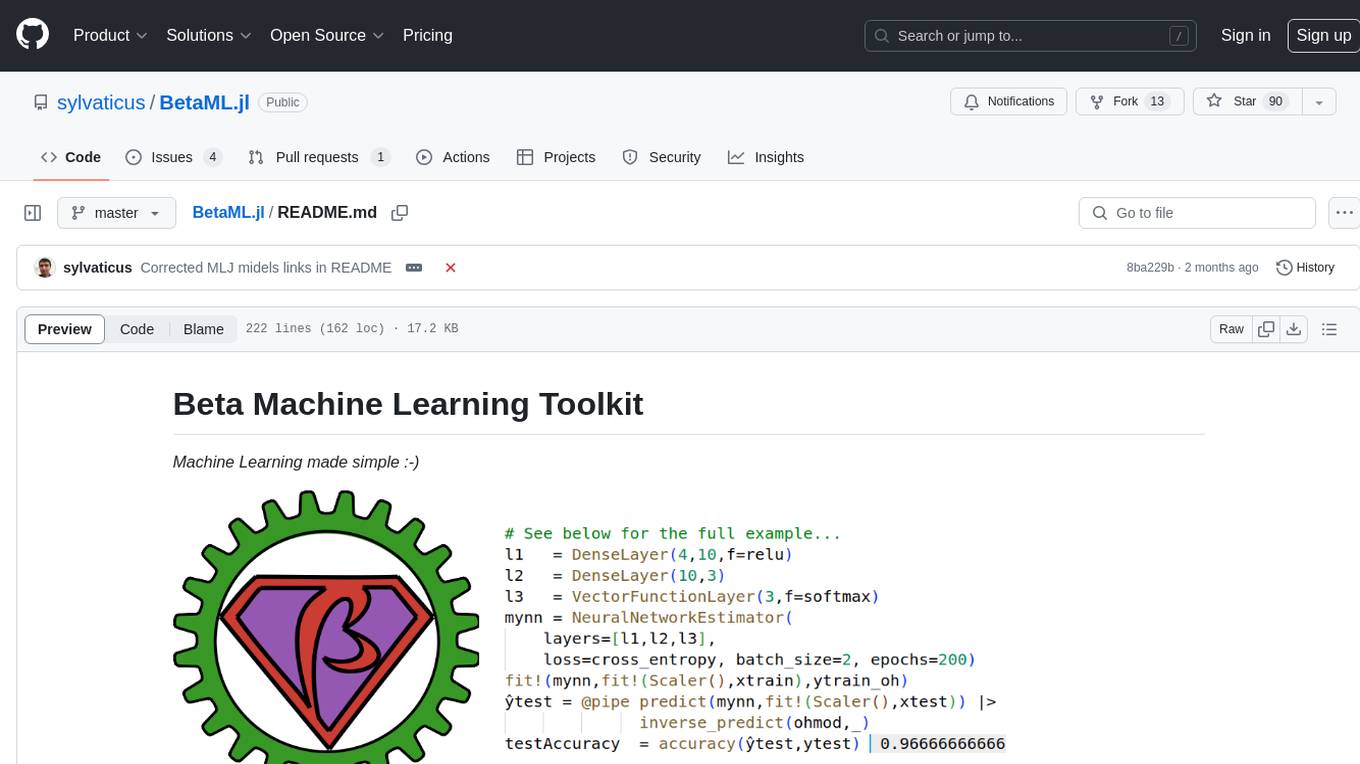
BetaML.jl
The Beta Machine Learning Toolkit is a package containing various algorithms and utilities for implementing machine learning workflows in multiple languages, including Julia, Python, and R. It offers a range of supervised and unsupervised models, data transformers, and assessment tools. The models are implemented entirely in Julia and are not wrappers for third-party models. Users can easily contribute new models or request implementations. The focus is on user-friendliness rather than computational efficiency, making it suitable for educational and research purposes.
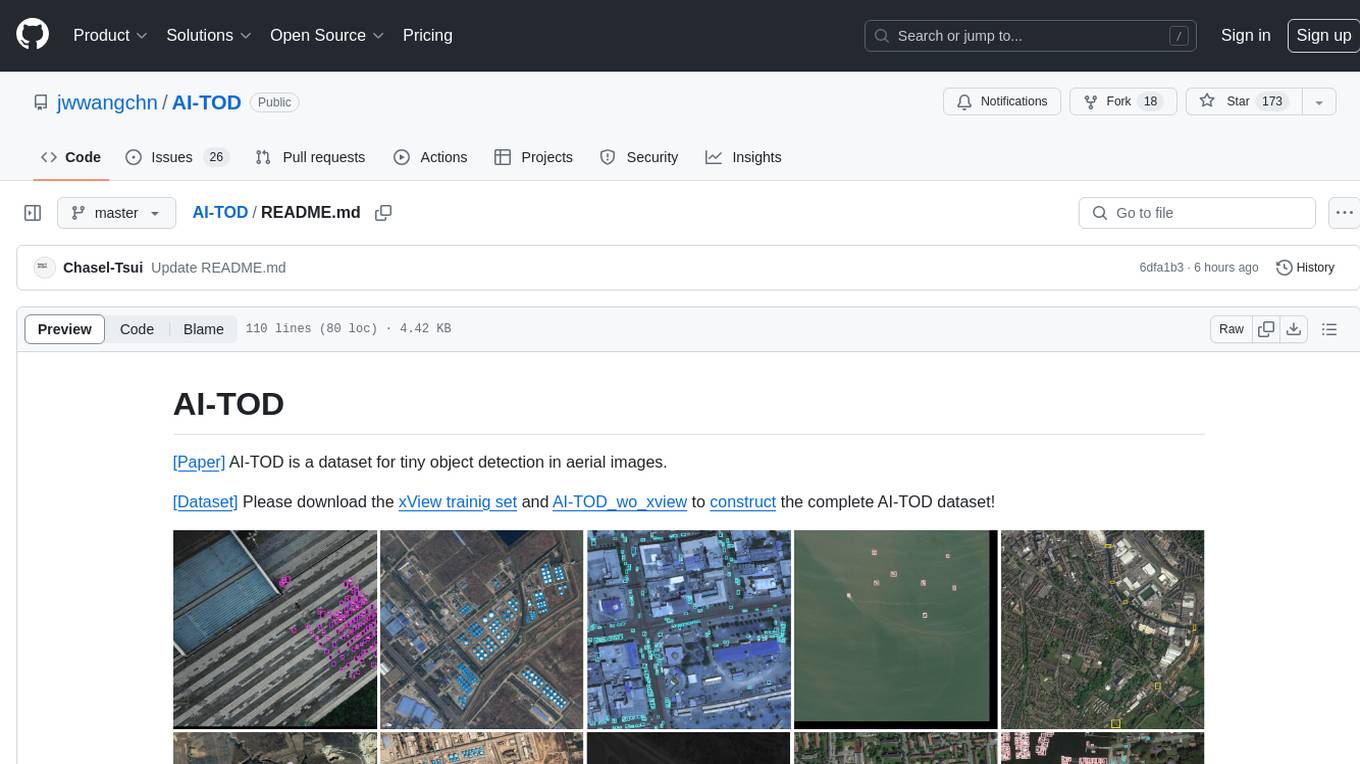
AI-TOD
AI-TOD is a dataset for tiny object detection in aerial images, containing 700,621 object instances across 28,036 images. Objects in AI-TOD are smaller with a mean size of 12.8 pixels compared to other aerial image datasets. To use AI-TOD, download xView training set and AI-TOD_wo_xview, then generate the complete dataset using the provided synthesis tool. The dataset is publicly available for academic and research purposes under CC BY-NC-SA 4.0 license.
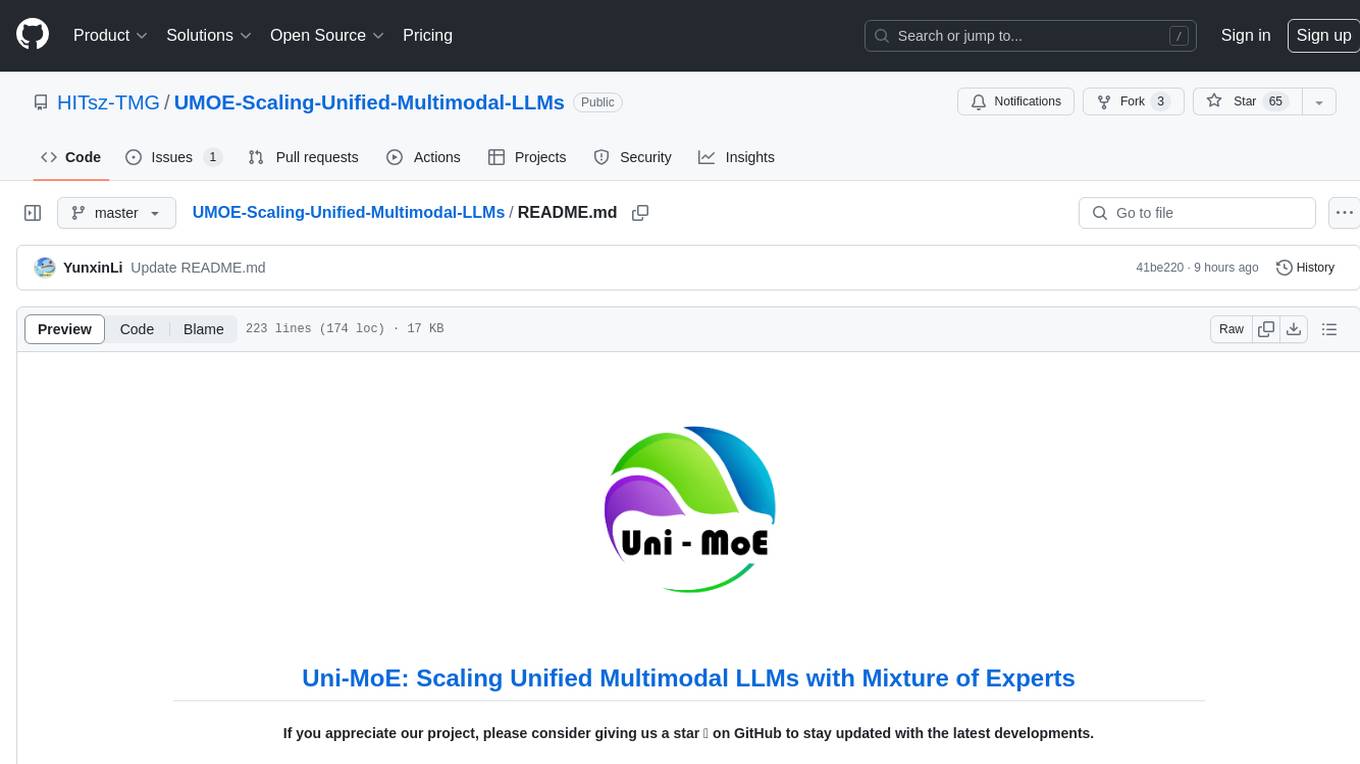
UMOE-Scaling-Unified-Multimodal-LLMs
Uni-MoE is a MoE-based unified multimodal model that can handle diverse modalities including audio, speech, image, text, and video. The project focuses on scaling Unified Multimodal LLMs with a Mixture of Experts framework. It offers enhanced functionality for training across multiple nodes and GPUs, as well as parallel processing at both the expert and modality levels. The model architecture involves three training stages: building connectors for multimodal understanding, developing modality-specific experts, and incorporating multiple trained experts into LLMs using the LoRA technique on mixed multimodal data. The tool provides instructions for installation, weights organization, inference, training, and evaluation on various datasets.
For similar jobs

weave
Weave is a toolkit for developing Generative AI applications, built by Weights & Biases. With Weave, you can log and debug language model inputs, outputs, and traces; build rigorous, apples-to-apples evaluations for language model use cases; and organize all the information generated across the LLM workflow, from experimentation to evaluations to production. Weave aims to bring rigor, best-practices, and composability to the inherently experimental process of developing Generative AI software, without introducing cognitive overhead.

LLMStack
LLMStack is a no-code platform for building generative AI agents, workflows, and chatbots. It allows users to connect their own data, internal tools, and GPT-powered models without any coding experience. LLMStack can be deployed to the cloud or on-premise and can be accessed via HTTP API or triggered from Slack or Discord.

VisionCraft
The VisionCraft API is a free API for using over 100 different AI models. From images to sound.

kaito
Kaito is an operator that automates the AI/ML inference model deployment in a Kubernetes cluster. It manages large model files using container images, avoids tuning deployment parameters to fit GPU hardware by providing preset configurations, auto-provisions GPU nodes based on model requirements, and hosts large model images in the public Microsoft Container Registry (MCR) if the license allows. Using Kaito, the workflow of onboarding large AI inference models in Kubernetes is largely simplified.

PyRIT
PyRIT is an open access automation framework designed to empower security professionals and ML engineers to red team foundation models and their applications. It automates AI Red Teaming tasks to allow operators to focus on more complicated and time-consuming tasks and can also identify security harms such as misuse (e.g., malware generation, jailbreaking), and privacy harms (e.g., identity theft). The goal is to allow researchers to have a baseline of how well their model and entire inference pipeline is doing against different harm categories and to be able to compare that baseline to future iterations of their model. This allows them to have empirical data on how well their model is doing today, and detect any degradation of performance based on future improvements.

tabby
Tabby is a self-hosted AI coding assistant, offering an open-source and on-premises alternative to GitHub Copilot. It boasts several key features: * Self-contained, with no need for a DBMS or cloud service. * OpenAPI interface, easy to integrate with existing infrastructure (e.g Cloud IDE). * Supports consumer-grade GPUs.

spear
SPEAR (Simulator for Photorealistic Embodied AI Research) is a powerful tool for training embodied agents. It features 300 unique virtual indoor environments with 2,566 unique rooms and 17,234 unique objects that can be manipulated individually. Each environment is designed by a professional artist and features detailed geometry, photorealistic materials, and a unique floor plan and object layout. SPEAR is implemented as Unreal Engine assets and provides an OpenAI Gym interface for interacting with the environments via Python.

Magick
Magick is a groundbreaking visual AIDE (Artificial Intelligence Development Environment) for no-code data pipelines and multimodal agents. Magick can connect to other services and comes with nodes and templates well-suited for intelligent agents, chatbots, complex reasoning systems and realistic characters.

